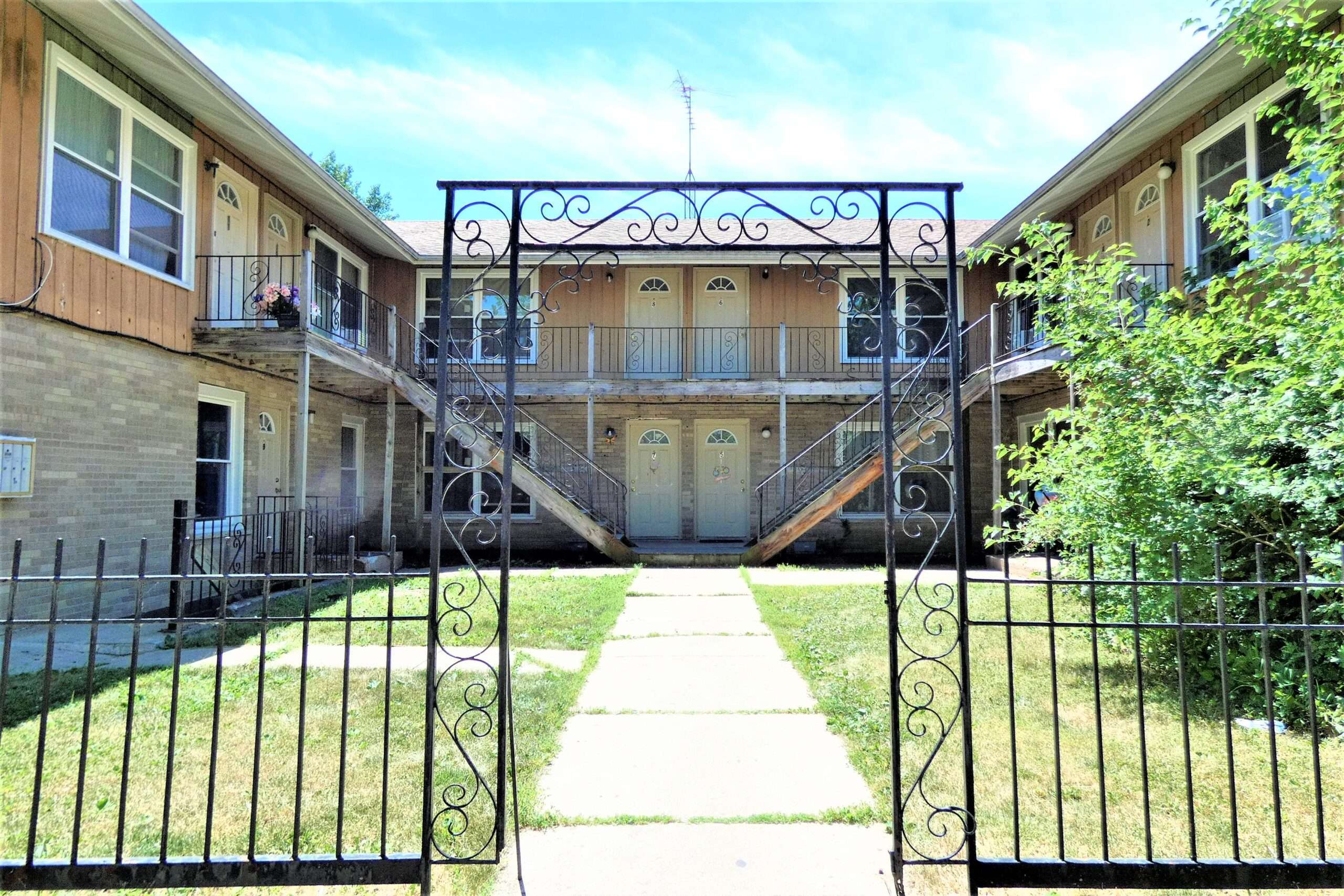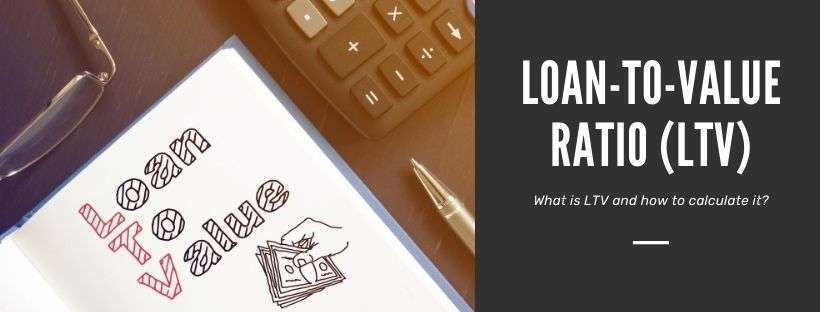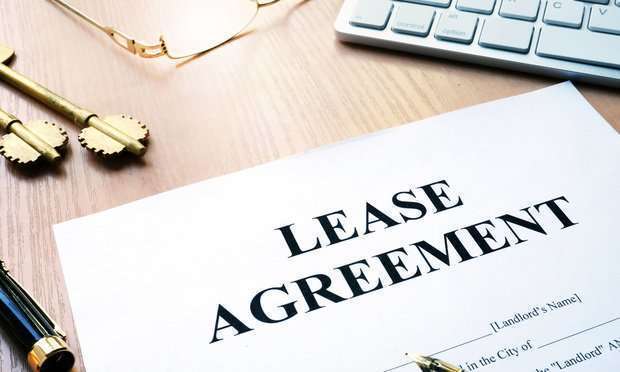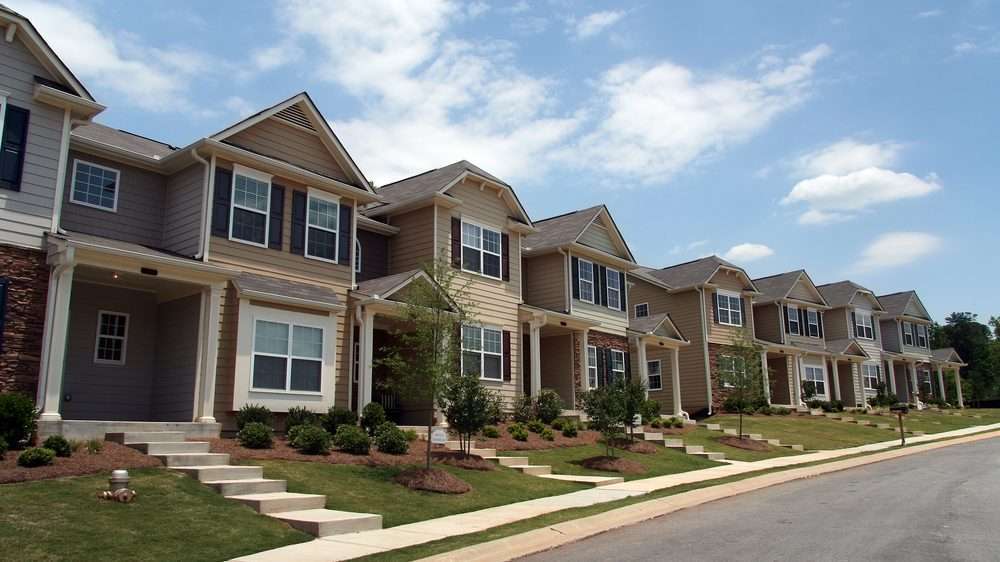Listing Broker: Randolph Taylor
630.474.6441 | rtaylor@creconsult.net
Price: $995,000
Cap Rate: 7.35%
SHOWINGS: Wednesday Aug 3rd 11 AM - 12 PM
https://properties.expcommercial.com/1030907-sale

eXp Commercial is one of the fastest-growing national commercial real estate brokerage firms. The Chicago Multifamily Brokerage Division focuses on listing and selling multifamily properties throughout the Chicago Area and Suburbs.


Debt yield hasn’t traditionally been a primary commercial real estate loan underwriting metric, but more lenders are incorporating it into their criteria. In the current real estate market, measuring debt yield ratios provides lenders with a stable assessment regardless of unusual or changing conditions.
Lenders use debt yield ratios to determine what their return would be if a buyer immediately defaulted on a commercial real estate loan. Loans with low debt yields are considered riskier, as the lender would receive a smaller return in the event of foreclosure. Higher debt yields are less risky because the lender would receive a larger return and could recoup their losses faster.
Once lenders know what annual return they’d receive, they can calculate how long it’d take to recoup the loss on a foreclosed property. This is done by dividing 100 percent by the debt yield ratio (annual return). The result is the number of years that it’d take to recoup all losses. Recoup Time = 100 / Debt Yield Assuming the above debt yield of 12 percent, the lender could recoup their investment in around 8.3 years (100% / 12% = 8.33 years). Borrowers can alternatively use the ratio to calculate the maximum loan amount a property can qualify for. If the allowed debt yield and net operating income are known, then the loan amount is the NOI divided by the debt yield. Maximum Loan Amount = Net Operating Income / Debt YieldIf a lender requires a minimum debt yield of 10 percent, the maximum amount that the above example could qualify for would be $1.2 million ($120,000 / 0.10 = $1,200.000).
(Of course, any maximum loan amount would also be subject to loan to value (LTV) and debt service coverage ratio (DSCR) requirements. If a lender considers all three of these ratios, whichever has the lowest permitted loan amount is the one that sets the maximum amount borrowed.)Loan-to-value ratios depend heavily on the value of a commercial property, and this ratio is susceptible to large swings in property values. Borrowers can potentially get much larger loans when property values increase drastically, and lenders can be underwriting an underwater loan if property values then drop drastically.
In contrast, debt yield ratios aren’t impacted by changes in property value. The loan itself is the underlying denominator, and not how much the property is worth. So long as net operating income doesn’t change, debt yield won’t change after a loan is underwritten.Debt yield is based on the loan amount, and thus won’t change with interest rates or amortization schedules. It is thus a more consistent measure in many situations, even though both measurements use net operating income.
The Comptroller’s Commercial Real Estate Lending booklet recommends a minimum debt yield of 10 percent, and most lenders that consider this metric follow that recommendation.
In certain situations, lenders may allow a 9 percent debt yield for desirable properties in major markets (e.g. New York City, Los Angeles). Ratios of 8 percent for truly exceptional properties are quite rare, although not altogether unheard of.
Notably, debt yield is based on current net operating income. Projected rent increases or NOI growth isn’t considered when calculating the ratio, so adjusting projections generally won’t have an impact on whether debt yield meets a lender’s minimum requirement.

Loan to value ratio is a standard metric that lenders use to assess default risk and qualify commercial real estate loans. While it’s far from the only data point lenders consider, it’s one of the most basic and often checked early on during the loan application process.
Loan to value (LTV) ratio is a straightforward way to measure a commercial real estate loan’s size against the value of the financed property. The ratio is simple, yet considered one of the accurate ways to assess the risk that individual loans present.
Loan to Value Ratio = Loan Balance / Property Value For example: a $400,000 loan on a $500,000 commercial property would have an LTV of 80% ($400,000 / $500,000 = 0.80).First, borrowers have less equity in their commercial property when the associated loan has a high LTV. Should a property become unprofitable, borrowers who have less equity may be more apt to walk away and default on their loan.
Second, properties are more likely to become underwater when their associated loan has a high LTV. Should the local real estate market crash, properties with high LTV ratios will more quickly become underwater. This not only increases the risk of default, but also may force lenders to take a loss if they foreclose and auction off a property.
In order to ensure that loans fall within their risk parameters, lenders have maximum LTVs that they’ll allow. If borrowers know a loan program’s maximum allowed ratio, the LTV formula can be inverted to determine the maximum property value allowed or down-payment required.The combined ratio provides a more comprehensive measure when multiple loans and/or lines of credit are being used. It’s unnecessary when using only one loan.
Debt service coverage ratio (DSCR) focuses on interest rates and amortization schedules. This metric is almost entirely insulated from changes in property value.
Loan to value doesn’t assess the financials of a loan itself in the same way that DSCR does, but instead examines the loan’s amount as it relates to the property.Cap rate measures a property’s net operating income against the property’s value. While this is needed to assess how profitable a property is, it doesn’t say anything about the property’s financing.
Loan to value uses the same property value data point, but examines the property’s financing rather than its income.Most commercial real estate loan programs allow a maximum loan to value ratio of 75-80%, but some programs differ from this range. Special federal loan programs (e.g. HUD/FHA 223(f)) allow ratios of 83.3-90%. Some private loans will only permit 65-70%.
Additionally, a few specialized programs (e.g. Freddie Mac Green Advantage) may amend the maximum LTV slightly. Any such amendments are usually specifically so that investors can install environmentally friendly or similar improvements.
While qualified investors can take advantage of a program’s maximum allowed LTV, sometimes it’s advantageous to reduce the LTV in order to get a lower interest rate. Certain programs minorly reduce the interest rate when a borrower has more equity in their property. Even if such reductions are minor, the cumulative savings can be substantial considering the time and duration of commercial real estate loans.The borrowed amount and property value are needed to calculate the loan to value ratio. A property’s appraised value is most often used, which is one reason why lenders typically require a recent appraisal during underwriting.
The formula to calculate LTV is: Loan to Value Ratio = Loan Balance / Property Value As another example, consider a $1.2 million property that’s being financed with a $1 million loan. The LTV would be 83.3%, and a specialize loan program that allows 80+% LTVs would likely be needed (1,000,000 / 1,200,000 = 83.3%). The formula can be inverted to determine the maximum permitted loan balance or property value: Property Value = Loan Balance / LTV ratio Consider a borrower who knows they can qualify for a $350,000 loan through a program that allows a maximum LTV ratio of 75%. The borrower would be able to purchase a property worth up to about $467,000 ($350,000 / 0.75% = $466,667).Loan-to-value ratios must be met in order to qualify for commercial real estate loans. After checking a loan program’s maximum LTV, the formula can be used to determine:

Real estate has long enjoyed the reputation as an inflation hedge. According to data and analysis from JLL, even with the spikes in CPI the US has been experiencing, that statement remains true, at least for multifamily. And as pressure builds on the ability to increase rents and allow continued profitable expansion, there’s evidence that the inflation rate has begun to slow.
“The national average rent growth for Class A multi-housing properties has surpassed inflationary growth by 198 basis points from 2010 to the first quarter of 2022,” according to JLL. “In fact, in the first quarter of 2022, national multi-housing rents increased 15 percent year-over-year, as rising inflation translated to significantly higher rents.”
Multifamily housing does have an ability to mark rents to market, increasing them both on an annual basis at renewal time and when there is turnover in units. According to Yardi Matrix, multifamily asking rents hit an all-time high in April of $1,659, with rents up 8.8% in all but one of the top 30 metropolitan areas.
That pricing strength has also enabled growing property values and cap rate compression. Walker & Dunlop’s latest multifamily outlook stated that nearly $290 billion in transactions were logged in 2021, more than double the total from 2020. “Part of the rebound in the multifamily market reflected a return by many renters who had vacated their urban apartments during the height of the pandemic, but vacancy levels were also flattened by the lack of new multifamily completions,” the report noted.
However, JLL’s framing does suggest that there might be limitations. Class A housing may be able to command continued rent growth from consumers with higher incomes. Whether that might be true for Class B or C housing, where consumers are likely to have more constrained financial resources, is far from clear.
Even for Class A, though, there are eventually limits. “The convergence of several trends over the pandemic, namely home buyer affordability issues, rapidly rising wages, population migration trends and a supply and demand imbalance have resulted in a level of rent growth that is unsustainable,” the JLL release quoted Geraldine Guichardo, JLL head of Americas living research and global head of research, hotels, as saying.
And negative leverage has emerged in multifamily, with shrinking returns for buyers despite rent hikes.
JLL is predicting that both inflation and rental growth will start moderating this year and through 2024, with rates eventually dropping below 5%.
Source: Multifamily Rent Growth Continues to Outpace Inflation

Rents continue their steady rise across the nation. According to the July 2022 Apartment List National Rent Report, the national index increased 1.3% during June. This consistent month-over-month (MoM) growth puts rent growth ahead by 14.1% year-over-year (YoY).
During the first half of 2022, rents are up 5.4%, yet that is considerably lower than the 8.8% increase during the first half of 2021. In the years leading up to the pandemic, rent growth during the first six months of the year averaged roughly 3.4%.
While the June increase this year was similar to last month’s growth, it is nearly half the increase seen in June 2021 but almost double what was typically seen in June prior to the pandemic.
Rents are also up in 97 of the 100 largest U.S. metros. During the past six months, San Jose, Calif., and Rochester, N.Y., have each seen 11% growth. Meanwhile, Miami, Orlando, Fla., Tucson, Ariz., Tampa, Fla., and San Diego have rent increases of at least 20% during the past year. Tampa, Rochester, and Tucson each have seen rent growth of at least 40% since March 2020.
Despite an 8% increase during the past 12 months, San Francisco is the only city with rent declines since March 2020. San Jose rents are up 3% since March 2020. Other slow-growing markets during the past six months include Phoenix, Las Vegas, and Sacramento, Calif.

Rising mortgage rates. Faltering home sales. Skyrocketing rents. Here’s how to make sense of a baffling real estate market.
After a two-year boom, the United States housing market finds itself at a pivotal moment — but pivoting to what, exactly?
This spring should have been a busy time for home sellers. Instead, the season was a dud, stalled by a dramatic spike in mortgage rates that stunned even industry experts with its chilling effect on the market.
The frenzied environment we had become accustomed to — with its eye-popping price increases and bidding wars that left buyers dejected and sellers giddy — suddenly seemed to be a thing of the past. While buyers stood on the sidelines, recalculating their much larger mortgage payments, sellers began to realize that offers of $100,000 or more over asking might not be forthcoming.
And over in the rental market, it’s “The Hunger Games,” as rents skyrocket and would-be renters in cities across the country compete with dozens of other applicants.
“Right now, we’re in this cauldron of uncertainty,” said Jonathan J. Miller, the president of Miller Samuel Real Estate Appraisers & Consultants. “Housing hates uncertainty. The biggest enemy of the housing market is uncertainty, and we have buckets full of uncertainty.”
We asked analysts, economists, and brokers to offer some clarity in this confusing time. Did they see this moment coming — and if so, what’s ahead for us in the near future? What would they do if they had to buy, sell or rent right now?
Unless you’re paying in cash, buying a home just got a lot more expensive.
Since December, mortgage rates have nearly doubled — rising to around 6 percent, the highest they’ve been since 2008 — in response to moves by the Federal Reserve to control inflation. In January, a buyer would have paid around $2,100 a month in principal and interest for a $500,000 home loan. Today, that same loan would cost about $2,900 a month.
Many buyers simply cannot absorb that kind of increase, particularly when it’s combined with current home prices, which rose more than 20 percent from May 2021 to May 2022, according to Zillow.
“That’s a one-two punch that a lot of buyers can’t overcome,” said Rick Sharga, an executive vice president of market intelligence at ATTOM, a real estate data company.
Experts aren’t anticipating that rates will return to the elevated levels of the 1970s and 1980s — they peaked at 18.4 percent in 1981 — but until inflation recedes, they will keep rising.
“When inflation peaks, mortgage rates will have peaked, and that’s really the key ingredient,” said Greg McBride, the chief financial analyst at Bankrate.com. “If we get more inflation numbers as we did a couple of weeks ago, there is no telling how high mortgage rates could go.”
Buyers weren’t the only ones caught off-guard by the rapid change. Many industry experts have had to recalibrate their predictions for the months ahead.
“I don’t think anybody on the planet expected them to double in six months,” Mr. Miller said. “That’s thrown a monkey wrench, another calculation, into the mix.”
“We all had rose-colored glasses when the vaccine was rolling out and it seemed like everything was going to get better,” said Daryl Fairweather, the chief economist at Redfin. “It turns out it’s a bit of a rougher ride reopening the economy and getting things back to normal.”
Prices are unlikely to take a nosedive, but cracks are showing. In the four-week period ending June 26, the median asking price for newly listed homes was down 1.5 percent from its all-time high this spring, and, on average, 6.5 percent of listings dropped their prices each week, according to a Redfin report.
Demand is down, too. The same Redfin report found that fewer people were searching Google for homes and asking to tour properties. Mortgage applications were down 24 percent, and pending sales fell 13 percent from the same time a year earlier, the largest drop since May 2020, according to Redfin.
“The long-term outlook is still quite strong,” Dr. Fairweather said. “But in the short-term, because of all the volatility in the economy, home prices might fall between now and next spring.”
At least for now, however, the days of double-digit percentage price increases are likely over. Markets like Tampa and Phoenix, which saw some of the biggest price increases, may take a hit, dropping by margins of 5 to 10 percent. Others may stay flat or see modest increases, like the 6.6 percent Realtor.com is projecting for 2022.
But prices are unlikely to collapse — in part, because inventory is still low, and there are more people who want homes than there are homes to buy. Although the inventory of active listings increased by almost 19 percent in June from a year ago, it is still down by 53.2 percent from 2019, according to Realtor.com.
“People waiting for home prices to fall are probably going to be disappointed,” Mr. Sharga said. “This is not 2008 all over again — we’re not looking at a housing bubble.”
It’s still a seller’s market, whether it feels that way or not.
In May, the median price of a home in the United States passed $400,000 for the first time, according to the National Association of Realtors. And bidding wars accounted for 55 percent of home sales in the four-week period ending June 19, up from 53 a year earlier, according to Redfin.
But with so many mixed signals, buyers may want to wait out the summer or even the spring of next year.
“Most likely, prices aren’t going to be going up between now and then, and there is a chance that they’ll fall,” said Dr. Fairweather, who described the current moment as a hibernation. “It’s not good for Redfin’s business, but that is what’s happening.”
But if you need a home now — and you can stomach the roller coaster — the world is looking a little brighter when you squint. Yes, your monthly payments will be higher than they would have been had you bought a few months ago. But the low rates of 2020 and 2021 weren’t entirely your friend: They fueled a runaway train of spiraling home prices, pushing the boundaries of affordability. Soon, buyers may be in a better position than they have been in a long time.
Mr. Miller, who said he was “thrilled” to see rates rise, pointed out that “5 percent mortgage rates are not a bad thing in terms of sustainable housing markets.”
And remember: Rates fluctuate. Unlike the price you pay for a home, which is permanent, the mortgage rate is not. Or, as Mr. Sharga put it, you “date the rate, but marry the home.”
Not surprisingly, real estate agents, who earn their income from home sales, are bullish about buying now, arguing that for the first time in a long time, buyers could get a deal.
“You have to be a little bit of a cowgirl,” said Bess Freedman, the chief executive of Brown Harris Stevens, which predicted in its second-quarter market report that Manhattan was shifting to a buyer’s market. While one buyer may be scared off by the volatility, another “may come in and say, ‘You know what, there’s a hell of an opportunity right now. I have the money, I’m going to go in, I’m going to negotiate, I’m going to get a great price.’”
As the market cools, it could return to one that resembles a prepandemic normal, with homes that take a few months to sell and prices that increase gradually. Buyers may be able to start making a few reasonable demands — for appraisals, inspections and mortgage contingencies. And as inventory increases, they may even be able to compare a few options before making a decision.
“I’m hopeful we’re in a point right now where we’re in a return to sanity,” said Leonard Steinberg, a corporate broker at Compass. “Getting things to a normal pace — or a more sane-paced balance — is good for everyone.”
The time has come for sellers to reset their expectations. List your house today, and it is unlikely that 24 hours from now you will get to pluck an all-cash bid that’s $150,000 over list price from a sea of contingency-free offers.
“Those days are over,” said Lawrence Yun, the chief economist for the National Association of Realtors. “Don’t expect multiple offers.”
Your home may sit on the market for a few weeks and, if priced well, sell for around the asking price — which will be more than you would have gotten a year ago.
Those planning to sell in the next year would be better off doing it sooner rather than later. But if you can wait until the market settles into a new rhythm, you may have a better sense of what to expect two or three years from now.
“If you can wait, keep waiting until the weirdness that’s happening in the economy goes away,” Dr. Fairweather said. “The long-term outlook is rosier than the short-term outlook.”
And there’s another reason to wait: If you sell now and plan to buy, you may be trading a low mortgage rate for a higher one, and shopping in an unpredictable environment.
“We’re not talking about selling a stock where there is a desire to pick the absolute top. This is the place you live,” Mr. McBride said. “Worthy of at least equal consideration is where are you going to go?”
Pick nearly any city across the country — Austin, Nashville, Seattle, New York — and the story is one of rents rising by double-digit percentages amid scant inventory.
Nationally, the vacancy rate is below 5 percent, with more than a dozen renters competing for any given vacant apartment, according to RentCafe. That translates to extraordinarily high rents. In Manhattan, the median rent reached a record $4,000 a month in May, according to data from Douglas Elliman. The same month, the typical U.S. asking rent passed $2,000 for the first time, according to Redfin.
The rental market has been on a wild ride since the spring of 2020, with no end in sight. Early in the pandemic, markets in cities like New York saw rents plunge, as residents left and vacancies soared. Concessions, including months of free rent, became the norm. But those discounts soon vanished, and rents in New York now eclipse 2019 levels. Other markets, like that in Miami, never experienced a sharp decline, as renters from other cities who were able to work remotely moved in.
“Everyone wanted more space, and a lot of people wanted their own space,” said Igor Popov, the chief economist for Apartment List. “Those renters all gobbled up the inventory at a time when it was really hard to build” and to buy.
As he put it, “It was this perfect storm of raging demand and tight inventory.”
With few good alternatives, renters who might have moved this year have decided to stay put: Almost 62 percent have renewed their leases, according to RentCafe. That means there is less available inventory in a market that has long suffered from a lack of new housing.
“A lot of renters feel like they’re on a very crowded subway car,” Mr. Popov said. “If you have a seat, you might be uncomfortable, but you’re not getting up.”
Joshua Clark, a senior economist at Zillow, said he is stunned by how fast rents have climbed: “There was a heating up, but the fact that we are at these numbers — I would have laughed at myself if I predicted that.”
The forecast does not look good for renters, in the short-term or the long-term. Rising mortgage rates will push some buyers out of the sales market, putting more pressure on the rental market. And as rents climb, even fewer people will move. With no relief in sight for the inventory shortage, renters have few options.
In New York City, Mr. Steinberg said, “I don’t see enough cranes. The best gauge for a city with rentals is: Are they building tall buildings with lots of apartments? I don’t see too many — it’s not enough.”
Economists predict that rents will continue climbing for the next two or three years, but not at the same clip. Push enough renters to the edge of affordability and they will double and triple up, or leave one market in search of a cheaper one.
“The breakneck pace that we were on in 2021 is just not sustainable,” Mr. Popov said. “We’re already starting to see renters respond to that in terms of more searches with roommates.”
So what should renters do? If you can renew your lease, even at a higher rent, the odds are that will be cheaper than moving. You could consider taking on roommates or looking at cheaper neighborhoods. But none of the options are pleasant, and no one has a crystal ball to predict what the future holds.
“The major X factor is going to be what is happening in the rest of the economy,” Mr. Popov said. “If we start to see major shifts in the economy, then all bets are off and we’re in a new world.”

About 13,600 units were absorbed in 2021, even though just 4,250 rentals were completed, the Chicago Business Journal reported, citing Marcus & Millichap’s latest Chicago Multifamily Market Report.
Schaumburg and Arlington Heights-Palatine were the two best-performing suburbs. Vacancy rates in Schaumburg dropped 550 points from the previous year to 1.9 percent and rents rose 15 percent. In Arlington Heights-Palatine, vacancies rates fell 410 points and rents jumped 17 percent.
The shifts underscore ripple effects from the pandemic, as workers explore remote work models that crimp the need for downtown offices and seek more room in suburban settings.
“Multifamily is doing good and will only do better as the year goes on,” Toney Morton, chief financial officer at Independence, Ohio-based Redwood Living Inc., told the outlet. “Residential living is the alternative to buying a home, and even homeowners, especially seniors, are transitioning more to multifamily complexes as their lifestyles change.”
Morton said Redwood, which owns and develops multifamily properties, tends to prefer suburban areas for new projects as more land is usually available for construction.
“Our focus is suburban areas where there’s enough land for us to build our single-story apartment homes,” he said. “While we are new to the Chicago market, we are underway with new projects in Lockport, Oswego [to the southwest], and Crystal Lake [to the northwest].” Chicago-based Waterton plans to invest up to $150 million in building new multifamily properties across the Chicago area. The firm will focus on affordable, mid-rise developments in suburban neighborhoods. “The suburbs have been attractive in general, and there’s more demand for it now since Covid,”At the halfway point of the year, Cleveland, Cincinnati, Columbus, and Chicago have all seen rent growth well ahead of the national average....
